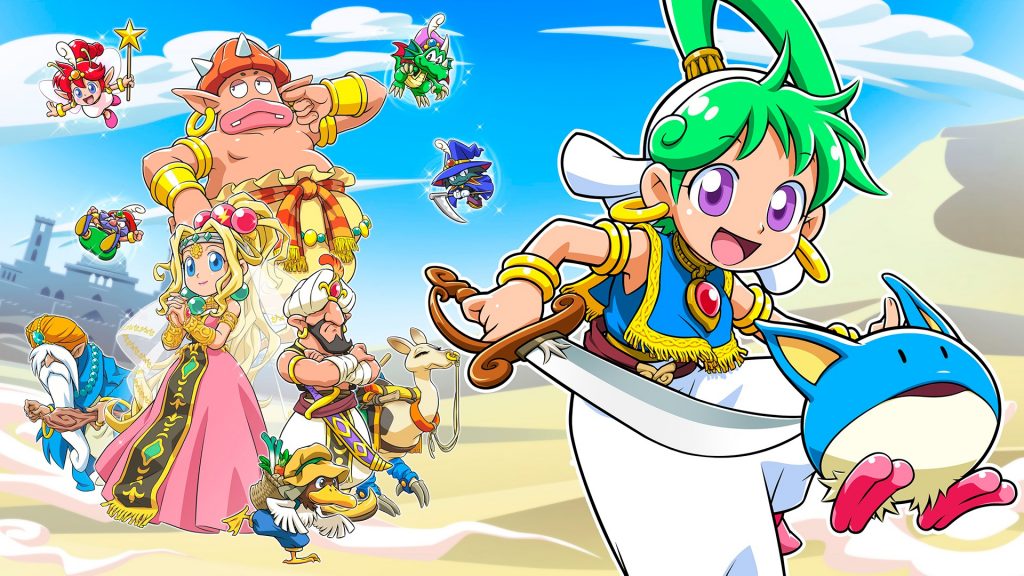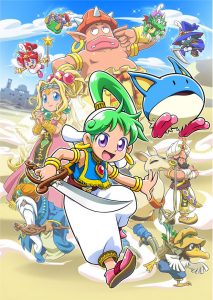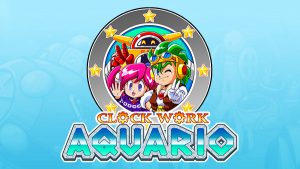
- ARAB NEWS
- 18 Jul 2025

Amin Abbas
DUBAI: Japanese video game producer Ryuichi Nishizawa is most well-known for his work on the Wonder Boy and Monster World series as well being the co-founder of Westone Bit Entertainment.
Nishizawa told Arab News Japan that he began working at the age of 18, and managed planning and pixel art for arcade games.
After leaving to work with UPL, he began a self-study programming course, which led him to create arcade games like Ninja-Kid, working as both programmer and game designer.
He later founded Westone, subsequently renamed to Westone Bit Entertainment. He has worked on several titles as both director and game designer, including the arcade version of Wonder Boy, the console versions of the Monster World series.
In an exclusive interview with Arab News Japan, Nishizawa shared his inspiration for video games, he said: “Half of my body is made up of ‘Star Wars,’ and the other half is ‘Close Encounters of the Third Kind’. These two films, which I first saw in 1978 when I was 15, were what first attracted me to the world of creativity. Whenever I create things, not just games, I find they are strongly influenced by these two films.”

About his favorite video games, Nishizawa said: “When I create games, I sometimes take inspiration from other games, but my main source of inspiration is films rather than games. I’ve been a fan of the Legend of Zelda series ever since the first games came out. I also loved Legend of Zelda: Breath of the Wild.”
About the most inspirational thing from Japanese culture that he has adapted into his daily life, Nishizawa said: “I think that the anime I watched as a kid, the manga I read as a teenager, and the films I watched as an adult have all had a large impact on my work. I loved watching TV as a kid. I liked tokusatsu series like Ultraman, Kamen Rider, and Kikaider, as well as Hanna Barbera’s animated short series, such as The Impossibles, The Herculoids, and Wacky Races, and every day I would sit and stare at the TV. Throughout my game development career, there have been many ways in which I feel I was influenced by these shows.”
Nishizawa is most well-known for being the creator of ‘Wonder Boy’ & ‘Monster World’ video game series, he shared with Arab News Japan the story of creating both video game series, explaining that after he managed the planning and programming for three game titles, he founded his own game development studio in 1985.
“There were three colleagues at first. The first game we developed was an arcade game called Wonder Boy. Most arcade games of the time were shooting games, and many had dark screens, so we decided that we wanted to create a game with a brighter screen, and settled on making an action game. This was around the time that Super Mario Bros. first became popular on the Famicom (NES), so I think we were influenced by that,” the producer added.
“Our company’s first game, Wonder Boy, was a hit, so we doubled the size of our development team, and began working on our second game. This second game was Monster Land. The name Monster World was first used on the console port for trademark reasons, so the original arcade version was called Monster Land. In Monster Land, the player journeys through the world while leveling up their character, so it was really the first arcade game to incorporate RPG elements, and consequently became a long-lasting hit,” he said.
Nishizawa also shared with Arab News Japan an exclusive story of developing ‘Clockwork Aquario’, an upcoming action-platform video game that was in development since 1992, he said: “Clockwork Aquario was an arcade game we had spent over two years developing; we completed it in 1993, but it was never released. Fighting games were the big thing in arcades back then, and the popularity of 2D platformers had declined. After 27 years, this unreleased game is about to be released for the first time this year. The story of this restoration project is quite a fascinating one, so I’ll talk about it here.”

Aquario Restoration Project timeline:
1. In 2006, a Japanese playtester who had tested Aquario posts his report on the game to his blog, along with a photo. This is the first time many overseas retro game fans learn about the existence of Aquario.
2. In 2012, coinciding with the release of the Monster World Collection on XBLA, Aquario is showcased on American gaming social media.
3. Demand grows from overseas Monster World fans who want to play Aquario.
4. After learning about the people interested in Aquario, one day I decide to look for it, and manage to find the Aquario source code hidden away in our office’s storage facility. I shared this news on Twitter.
5. Strictly Limited Games’ Dennis Mendel hears the news of the source code’s discovery, and creates the Aquario Restoration Project.
Nishizawa explained that he took inspiration from the Middle East region in some of his video games. “The setting of Asha in Monster World, which released recently in Japan is based on the Middle East in the 4th – 5th century,” he said.
“When designing the palace building that appears in the game, we used buildings like luxury resort hotels in Dubai, and the Sheikh Zayed Grand Mosque in Abu Dhabi, as reference material. We also used the ruins of Persepolis and the buildings of Isfahan for reference, among others.”
“When I was exposed to the history and culture of the Middle East through game development, I was surprised by the sheer number of majestic, awe-inspiring buildings that remind you that this place was once the center of the world, as well as the beautiful city streets that blend into the natural environment. On the other hand, they also have these massive skyscrapers, resorts, and beautiful night skylines, so the contrast between old and new is really quite remarkable. When I think about just how long the history of this region is, it occurs to me that it could be pretty similar to my hometown of Kyoto in that respect,” he added.